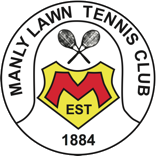Tennis Intelligence: It Takes Pyramid Power | ATP
Too often, the average player’s focus is on their “Hardware” — coordinating muscles to hit the ball. True, for most, just coordinating your body to consistently hit the ball week in and week out is difficult to say the least. It quickly becomes very frustrating when playing in the wind, changing court surfaces or against, what I will call, an awkward opponent. And escalates even faster as we age and our muscles lose strength and coordination.
Our Hardware skills pathway includes three essential skills which underpin any tennis stroke: ball watching, balance and rhythm. The basic Tennis Whisperer program teaches the development of the core supporting muscles to both enhance those skills and prevent injury. As an example, just improving your ability to “really see the ball” rather than merely trying to “watch” it during play can go a long way to improving your consistency — at any age and stage of tennis. These basic skills can be taught or refreshed at any age.
But Hardware is only one part of the equation. Hardware is very much about muscles, joints and physical traits. “Software” is brain perception, action and decision making. Software is what often gives a player a head-start on those who might be physically stronger, quicker or, dare I say, younger! And from time to time, a win against the ‘better hitter’.
Your neural system is the third part of this equation, and in basic terms, connects a player’s “Software” to their “Hardware”.
Software should be view as a “Pyramid”. At its base be more aware of your end of the court: basic court positions when returning serve or covering the net. And the positions change depending on the opponent and the conditions. For the more powerful opponent, it’s better to play further back when returning serve — not only to give yourself a little more time to watch the ball, but more importantly to ensure you’re moving forward into the shot to stay on balance. This is why Nadal, one of the best players in the world, plays so far back to improves his balance by moving forward into each shot.
Moving up the Pyramid, and still at your end of the court, where you stand in the court, particularly in dubs, has a huge impact on your ability to stay in the point. For example, at ANY level of tennis, Tennis Physics means that EIGHTY PERCENT (80%) of shots fall in a two (metre) circle around the middle T of the serve line. Merely standing in that circle guarantees you’ll get a shot at most balls — you might not make the shot but you’ll be in the point.
As the Pyramid narrows, and looking at the opponent’s end of the court, action and decision-making comes to the fore. Your focus is on the Hardware of the opponent. Do they have any “obvious weaknesses” — not just the weaker backhand side but where do they consistently return the ball? Any physical limitations in running down lobs? Are they comfortable hitting volleys or overheads? Are they comfortable moving forward, backwards, sideways? What did you learn from the warm-up? [You didn’t try to win the warm-up, right??]
Even further up the Pyramid, and still at your opponent’s end of the court, your focus is on the opponent’s Software. How can you identify and find a way to exploit their limitations? Where do they stand in the court, to return serve, at the net etc? Do they stand too close to the net and therefore are suckers to a simple lob return? What’s their state of mind at different times of the match? Do they rush under pressure? Consistently miss first serves on game and tie breaker points?? How can you adjust your Software and Hardware to take full advantage of your observations during play??
And lastly, at the very Pyramid Top, and now we are back to your end of the court, what’s your decision-making style to analyze opponents during match play. It’s the rare player who can change their Hardware midpoint to hit a different shot under pressure. Even rarer, the player who can consistently play more than one type of game — to unsettle an opponent and match the conditions. For most of us, suffice to say, it’s better to rely on a simple ritual to prepare to play each point — at least to start out each point standing in the right position and with a calm mind.
Tennis is a great game. And you’ll get so much more enjoyment by NOT leaving your Software on the sidelines. And who knows, perhaps a few more wins.
© Rob Muir, USPTA
Tennis Whisperer


